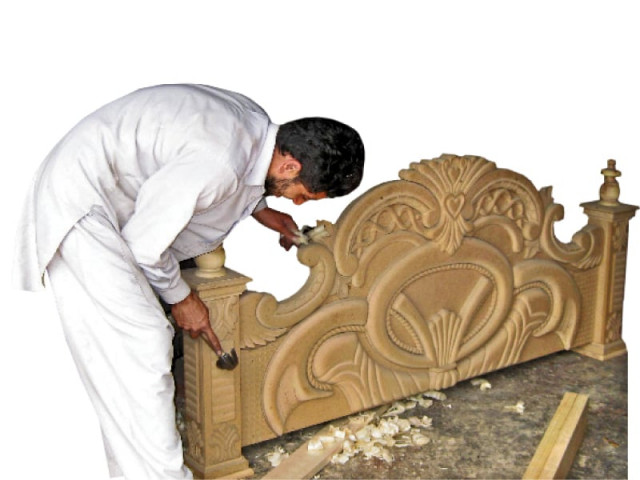
The Switzerland of the East is famous for its sparkling waters and undulating green mountains that hide one of the world’s most ancient civilisations. However, Swat Valley also has another unique quality that has contributed to its fame well beyond its own grassy boundaries.
The maestros of Swat have passed down the art of wood carving from generation to generation for centuries now. Furniture for interior and exterior décor like doors, beds, chairs, tables and sofas is styled in typical Swati architecture, which has barely changed since the advent of Buddhism in the region. There are expensive antique pieces available on the market – some dating back a thousand years – along with contemporary pieces in the same design.

It is estimated that over 5,000 engraved furniture shops, factories and cottage industries can be found in areas of upper Swat like Manglawar, Bahrain and Khwazakhela. Artisans say they cater mostly to tourists who flock to Swat from other parts of the country and from abroad. Most craftsmen would agree though, that the market for their furniture has suffered a major setback after the law and order situation rapidly deteriorated in the valley once known for its peace and serenity.
Umer Farooq, 25, a craftsman for the past 12 years from Manglawar, happily tells The Express Tribune that the market for engraved furniture is now looking up with a lot of people presenting it as dowry. “It is a tough and time-consuming task that requires a lot of patience,” he proudly adds, “The maker gets his wages upon the completion of the entire set.”
An artisan from Bahrain in upper Swat, Afzal Khan, says the furniture remains in demand due to its durability and termite-repellent nature. It is made of Walnut, pine and deodar wood is highly coveted for its availability and eye-catching finish by residents who wish to carve, inscribe, and paint.
“The sweet aroma of newly carved wood fills the entire house for some time,” adds Afzal, “It can take anywhere between three months and a year to make a set of engraved furniture. The price, accordingly, ranges from Rs120,000 to Rs300,000.”

Anwar Khan owns a business of antique furniture in Mingora.
Despite the hefty price of engraved furniture, he says, many still prefer it over ordinary furnishings. “Before this spate of militancy hit our peaceful valley, Swat was a hub for foreign tourists who were very keen to buy our local designs in furniture,” says the shop-owner. “Where our business was once thriving, we are now eyeing customers everywhere with little luck.” The craftsman expressed hope that foreign tourists will once again flock to the area once peace is restored.
Most artisans associated with engraved furniture are demanding the government pave a way for the export of this ancient craft, as it can prove to be highly lucrative, not only for Swat, but for the national exchequer as well.
Published in The Express Tribune, May 10th, 2014.


















COMMENTS
Comments are moderated and generally will be posted if they are on-topic and not abusive.
For more information, please see our Comments FAQ